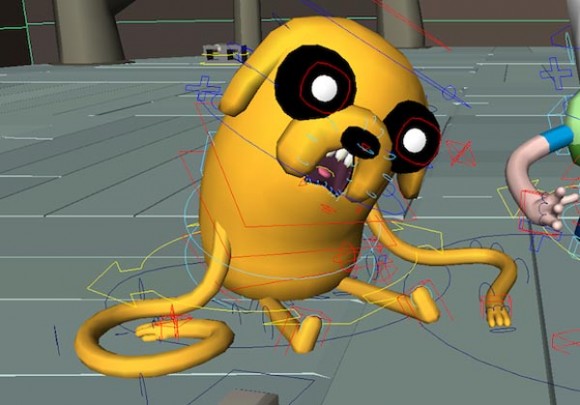
Rhizome.org published a great interview with David OReilly about his recent Adventure Time episode “A Glitch is a Glitch” and the challenges of making convincing styistic glitch:
Add a Comment“In general, doing stylistic glitch is easy compared to doing good character animation. Mixing the two gets very tricky though. One of the hardest things was corrupting the scene near the end of the entire broadcast so that the earlier clip is superimposed over Finn & Jake to give them an idea (i.e., using glitch as a kind of thought bubble). It was easy to storyboard that idea, but making it work properly took a lot of grind…It was all generated from ‘real’ glitches—but since everything is run through compositing software and sort of controlled you could also say it was all fake. The glitches needed to begin locally—inside objects—then spread out until they became part of the scene itself. The local stuff was done by generating a ton of sprites that had random pixels move outwardly to create the colorful flourishes we associate with video compression. These had a decent amount of control—a blob of glitchy stuff could move around a scene, for example. Once the scenes were fully animated and rendered the global full-frame glitches were done. There was some jpeg corruption added on top of the battle scene at the end.”


